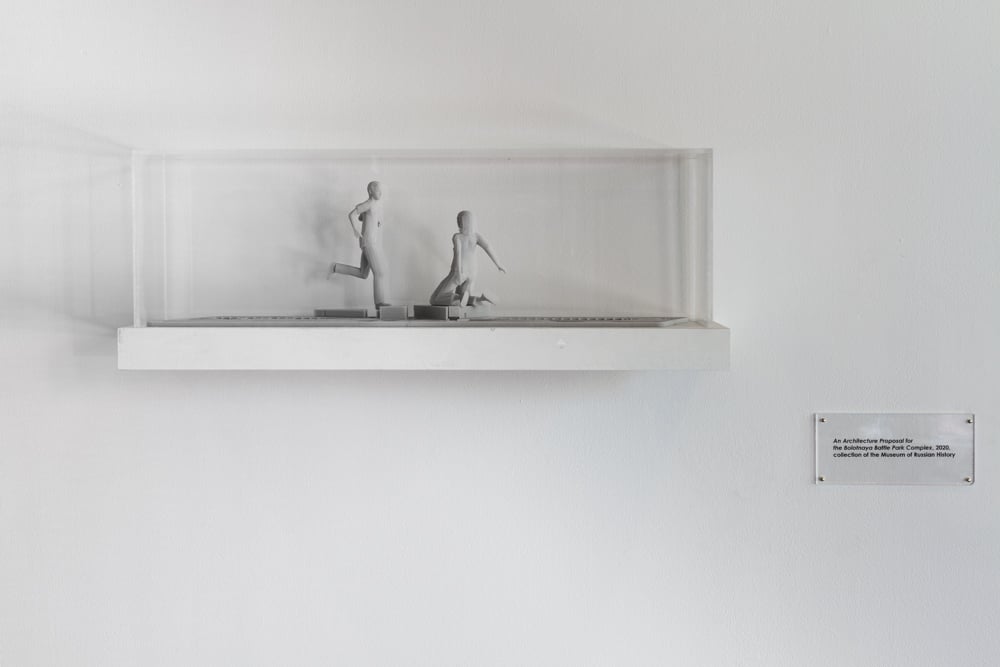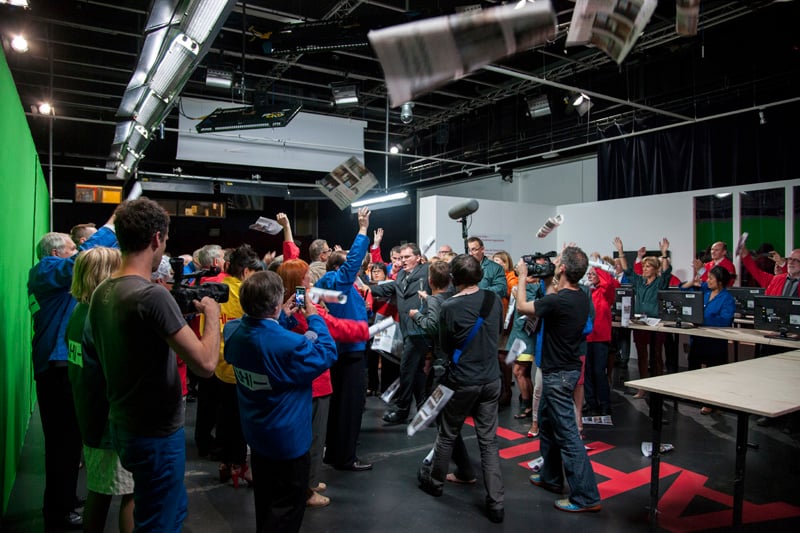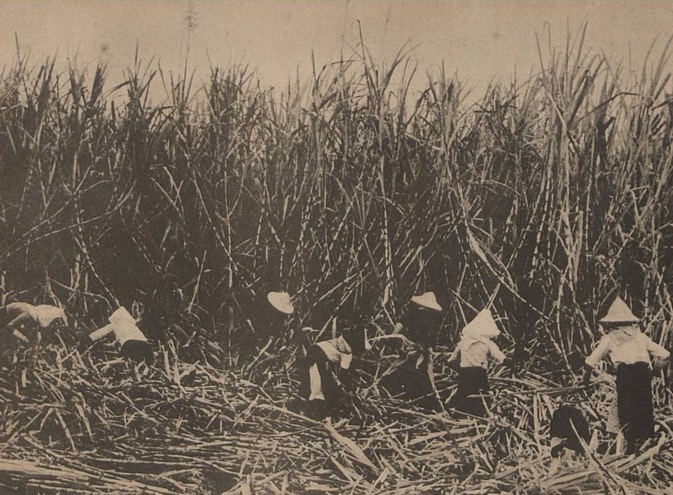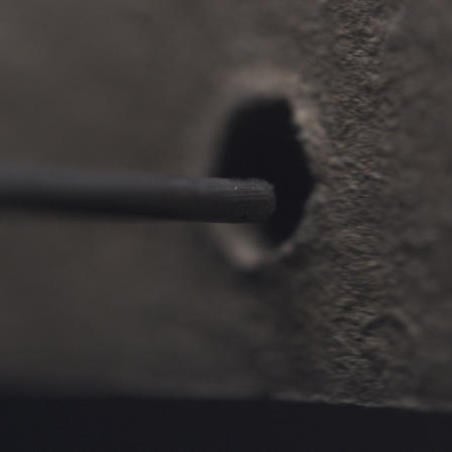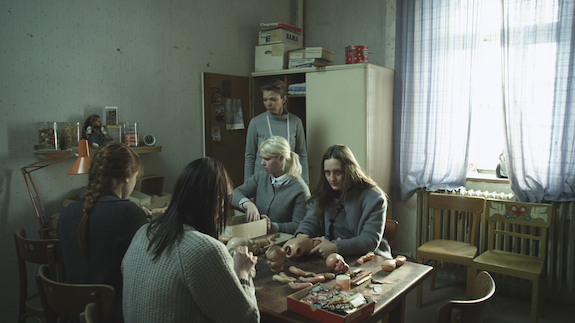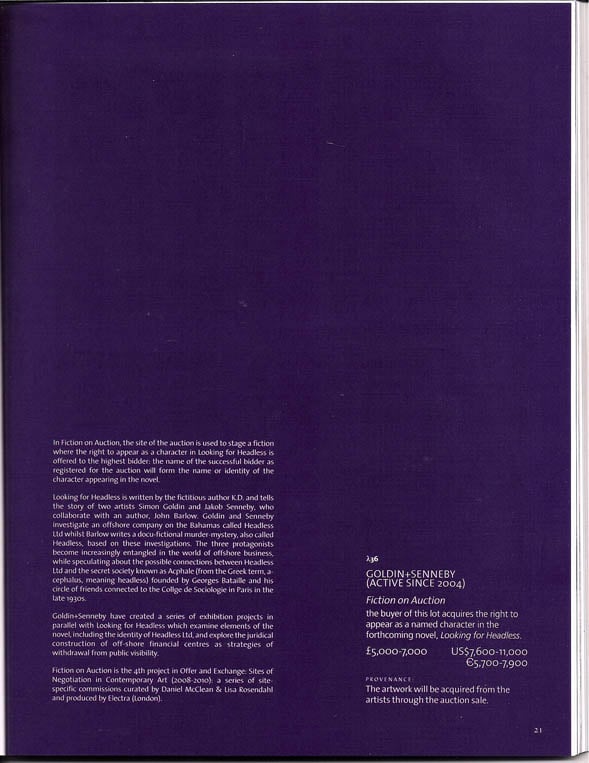
© » KADIST
Nagendra Gurung
Chalis Katesi Ramaula is a series of 240 prints capturing Nagendra Gurung’s life, work, and colleagues from the construction sites where he has worked in Dubai and Saudi Arabia. When seen together, the sequence appears to have a cinematic temporality, as one feels the passing of the years he has endured as a migrant worker. Gurung’s subjectivity is highly present, even when looking at the most banal scenes of cranes, concrete, and other machinery, which are rapidly transforming the landscape and society of the Gulf into its own version of capitalist futurism built through the exploitation of others.

© » KADIST
Yétúndé Olagbaju
Yétúndé Olagbaju’s On becoming a star series recuperates the figure of ‘Mammy’, a stereotype rooted in American slavery that typically depicts a larger, dark skinned woman as a maternal presence, often within a domestic setting, and typically taking care of white children. After being referred to as a Mammy during their undergraduate degree, Olagbaju began exploring the figure in 2016 as a means of healing. Olagbaju’s first presentation on this topic was a book called Black Collectibles: Mammy and Friends (1997) that sells tchotchkes—like salt and pepper shakers or figurines—of the racist mammy image taking different forms, from which Olagbaju exorcised the Mammy images by carefully cutting them out of the book with a razor blade.

© » KADIST
Antonio Vega Macotela
The mines at Potosí are both the site and subject of this work, also titled Potosí, by Antonio Vega Macotela. Historically, these mines bankrolled Spanish imperial coinage; the Spanish began excavating the site for silver in 1545 in what is now Bolivia. The mines themselves are situated at great altitude in the Andes, and are inhospitable to animal labor.

© » KADIST
Jared Owens
Hog feed 102 is an exemplary work by Jared Owens that combines two of the artist’s primary signatures: the use of soil smuggled out of the grounds at F. C. I. Fairton, a prison in which Owens was incarcerated, and the stowage diagram of the Brookes slave ship. This diagram from 1788 is a logistical blueprint of how to pack Black bodies efficiently, in tiered serial form, into the hold of a ship. Merging these vocabularies, Owens has laced a burlap sack for pig feed into the work to advance a multi-layered commentary on American prisons as ostensible ‘human farms’ that dehumanize inmates by turning them into a commodity for the prison industrial complex.
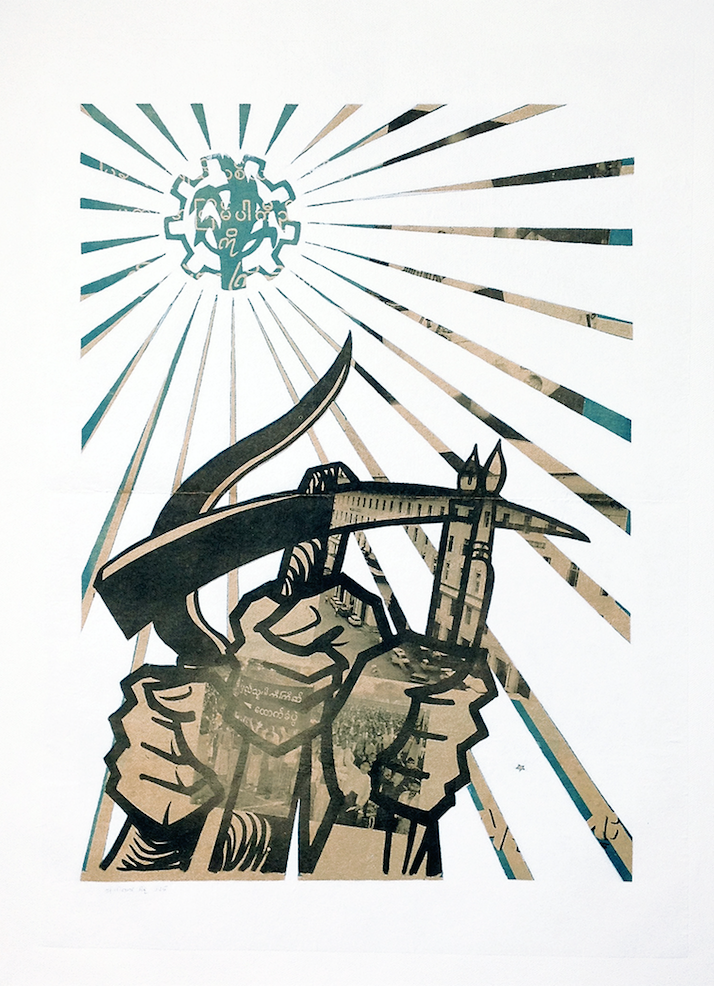
© » KADIST
Tun Win Aung and Wah Nu
Tun Win Aung and Wah Nu initiated the series 1000 Pieces (of White) in 2009, as a way to produce objects and images as a portrait of their shared life as partners and collaborators. Interweaving public and private, personal anecdote and pop cultural appropriation, their work attests to the poetry of the everyday. In addition to found and original materials, the artists have occasionally incorporated drawings and sketches by artist friends, and even by their own daughter into the ongoing work.

© » KADIST
Adelita Husni-Bey
After the Finish Line is a recent film by Adelita Husni-Bey produced for the exhibition Movement Break at Kadist-SF in 2015. It was developed in collaboration with a group of teenage athletes who have experienced injury as a result of their respective sporting activities. Through radical pedagogical practice, a process that attempts to de-individualize feelings of failure, the artist and the athletes recorded their experiences, discussing the meaning and trappings of competition — and in particular, from where desires for success stem.

© » KADIST
Arseny Zhilyaev
His large installation entitled The Museum of Proletarian Culture (2012) looked at the changes in artistic practice that have occurred in Russia throughout the last thirty years – from the amateur art of the late Soviet era to the commercialized post-Soviet cultural practices and the more recent self-expression via contemporary social networks. Thus, the exhibition becomes a whole installation where it is impossible to distinguish architecture from assemblage, facts from fantasy, document from fiction. It is a museum of museums where viewers find themselves in the era of didactic exhibitions; whereby the main protagonists are workers, engineers, and amateur artists, and finally replaced by the creative class of 1990s and 2000s.

© » KADIST
Moe Satt
Hands Around in Yangon is both a secular and religious exploration of the meaning of hands in Myanmar. Moe Satt’s father is Muslim, while his mother is Buddhist. In the Buddhist context, hand gestures or mudras are often important in signifying the identity of deities.

© » KADIST
Lam Tung Pang
Drawing & Print (Drawing & Print)
Lam Tung Pang created Sketches from train ride Chicago to San Francisco during his travels through the United States researching American curatorial strategies for representing traditional Chinese painting in museums and cultural institutions. The drawings incorporate both traditional and contemporary Chinese landscape techniques to reflect on the memory, history, and aesthetic practices of the Chinese laborers who played a prominent role in the American westward expansion. By representing the Western landscape according to Chinese aesthetics, Lam calls attention to the distortions and cultural specificity of American representations of the Western landscape and non-Western cultures.

© » KADIST
Arseny Zhilyaev
His large installation entitled The Museum of Proletarian Culture (2012) looked at the changes in artistic practice that have occurred in Russia throughout the last thirty years – from the amateur art of the late Soviet era to the commercialized post-Soviet cultural practices and the more recent self-expression via contemporary social networks. Thus, the exhibition becomes a whole installation where it is impossible to distinguish architecture from assemblage, facts from fantasy, document from fiction. It is a museum of museums where viewers find themselves in the era of didactic exhibitions; whereby the main protagonists are workers, engineers, and amateur artists, and finally replaced by the creative class of 1990s and 2000s.

© » KADIST
Phan Thao Nguyên
On September 22, 1940 the French signed an accord, which granted Japanese troops the right to occupy Indochina. The Japanese presence in Indochina lasted until the end of World War II and during the occupation, jute supplies from India were interrupted. Jute was used to make sacks as well as gunpowder, a crucial material for the war industry.

© » KADIST
Hong-Kai Wang
The video Music While We Work (2011) is the first part/work of a long-term research project started in 2010. The project revolves around and beyond the history of sugar in the small town Huwei in central Taiwan (the artist’s hometown). The town was nicknamed as the “Capital of Sugar” during the Japanese colonial ruling (1895-1945) of Taiwan.

© » KADIST
Hit Man Gurung
Hit Man Gurung’s series I Have to Feed Myself, My Family and My Country… addresses labor migration, a phenomenon prevalent in South Asian countries like Nepal. The laborers, most of whom are young and middle-aged, come from marginalized and underprivileged backgrounds. They leave their families back in the homeland with the dream of pursuing a better life for themselves and their families.

© » KADIST
Asli Çavusoglu
In the exhibition Pink as a Cabbage / Green as an Onion / Blue as an Orange , Asli Çavusoglu pursues her work on color to delve into an investigation into alternative agricultural systems and natural dyes made with fruits, vegetables, and plants cultivated by the farming initiatives she has been in touch with. Yet, rather than formulating the history of a particular color, the artist thinks through color, bringing together the various stories and models numerous farming initiatives in Turkey. The fabrics – each corresponding to a unique initiative – evoke the question: How have the social uprisings in Turkey during the last decade shaped the way we reimagine sites of everyday resistance?

© » KADIST
Tamar Guimarães
Canoas by Tamar Guimarães is a film made for the 2010 São Paulo biennial as an exercise in the projection of national identity. The main subject and setting of the film is Casa das Canoas, the home that architect Oscar Niemeyer built for himself in the early 1950s. Overlooking the bay on the outskirts of Rio de Janeiro, the building has achieved iconic status in Brazil.

© » KADIST
Arseny Zhilyaev
His large installation entitled The Museum of Proletarian Culture (2012) looked at the changes in artistic practice that have occurred in Russia throughout the last thirty years – from the amateur art of the late Soviet era to the commercialized post-Soviet cultural practices and the more recent self-expression via contemporary social networks. Thus, the exhibition becomes a whole installation where it is impossible to distinguish architecture from assemblage, facts from fantasy, document from fiction. It is a museum of museums where viewers find themselves in the era of didactic exhibitions; whereby the main protagonists are workers, engineers, and amateur artists, and finally replaced by the creative class of 1990s and 2000s.

© » KADIST
Zhou Tao
Created for the Seventh Shanghai Biennale at the Shanghai Art Museum, Zhou Tao’s 1,2,3,4 records morning staff meetings in over forty shops and companies in the immediate vicinity of the People’s Square. Regardless of occupation, the employees count off and move in step to the rhythms of their companies’ corporate songs or chants, which are meant to build team spirit and corporate loyalty. Zhou’s practice alchemizes the ordinary surroundings into a theatre where his camera is not simply a recording apparatus but an extension of existence.

© » KADIST
Hana Miletic
Incompatibles (Unitas) is made from discarded samples of the yarns that are exported from Croatia and not actually available in the local market. The textile industry in former Yugoslavia has essentially closed down under pressure from Indian and Chinese industries and as a result of the botched privatization of once state-owned factories. There is only one factory remaining in Zagreb producing these yarns.

© » KADIST
Mimian Hsu Chen
In Hsu’s work, Colonia China (2014), the artist documents a Chinese cemetery of Costa Rica’s Limón Province, along the country’s Caribbean coast. Serving as the final resting place for Chinese migrants who came to Coast Rica during the late nineteenth century as indentured laborers working to construct the Transatlantic Railroad, the Colonia China speaks to a long but divided history. Hsu’s photographs of the burial ground also echo her interest in typography, with blocky black lettering and painted Chinese characters marking the cemetery as a space belonging to two different worlds.

© » KADIST
Liu Chuang
Categorized as low-level literature, a “Love Stories” book is a romantic popular fiction of proletariat China, read mainly by teenagers, students, and young workers. These novels were mostly written by Taiwanese and Hong Kong writers in the 1980s to the 1990s to meet the cultural needs of the new social classes before being imported into China after the Chinese economic reform in the late 1980s. As contemporary China industry developed, a large number of workers became readers of this new pulp fiction.

© » KADIST
Asli Çavusoglu
In the exhibition Pink as a Cabbage / Green as an Onion / Blue as an Orange , Asli Çavusoglu pursues her work on color to delve into an investigation into alternative agricultural systems and natural dyes made with fruits, vegetables, and plants cultivated by the farming initiatives she has been in touch with. Yet, rather than formulating the history of a particular color, the artist thinks through color, bringing together the various stories and models numerous farming initiatives in Turkey. The fabrics – each corresponding to a unique initiative – evoke the question: How have the social uprisings in Turkey during the last decade shaped the way we reimagine sites of everyday resistance?
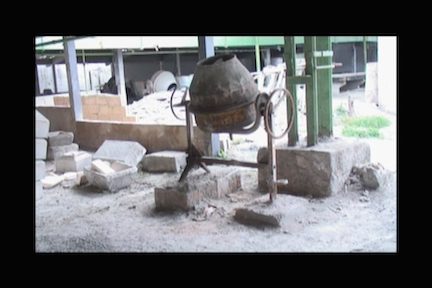
© » KADIST
Adrian Melis Sosa
In Cuba, due to the lack of materials, workers of state-owned construction companies must remain at work without doing anything, waiting for the end of the working day. Interested in this phenomenon, Adrian Melis asked the workers of a construction company to reproduce the sounds and noises characteristic of their work. The making of forty rectangular pieces for a floor construction is the recording of a “work performance” during a day from eight in the morning to five in the afternoon.

© » KADIST
Prabhakar Pachpute
Prabhakar Pachpute was born in 1986 and raised in Chandrapur (Maharashtra), India, a place known as ‘The City of Black Gold’, where his family has worked for three generations in one of the oldest mines in the country. Currently, he lives and works in Mumbai. He has done his Bachelors in Fine Arts from I. K. S. University, Khairagarh (Chhattisgarh) in 2009 and Masters from M. S. University Baroda (Gujrat) in 2011.

© » KADIST
Asli Çavusoglu
In the exhibition Pink as a Cabbage / Green as an Onion / Blue as an Orange , Asli Çavusoglu pursues her work on color to delve into an investigation into alternative agricultural systems and natural dyes made with fruits, vegetables, and plants cultivated by the farming initiatives she has been in touch with. Yet, rather than formulating the history of a particular color, the artist thinks through color, bringing together the various stories and models numerous farming initiatives in Turkey. The fabrics – each corresponding to a unique initiative – evoke the question: How have the social uprisings in Turkey during the last decade shaped the way we reimagine sites of everyday resistance?

© » KADIST
Li Shuang
ÆTHER (Poor Objects) by Li Shuang builds on the artist’s consideration of the interplay between physical and digital spaces. Through a kaleidoscopic video collage, Li examines the complexities of personal subjectivity within an increasingly immersive and omnipresent online culture. Among disparate imagery that includes extra-terrestrial simulations, dizzying hordes of birds, animated figures trapped in dystopian virtual spaces, and real-life abandoned places, the video references the Chinese creation myth of Nuwa, a goddess who uses her own body to repair the sky.
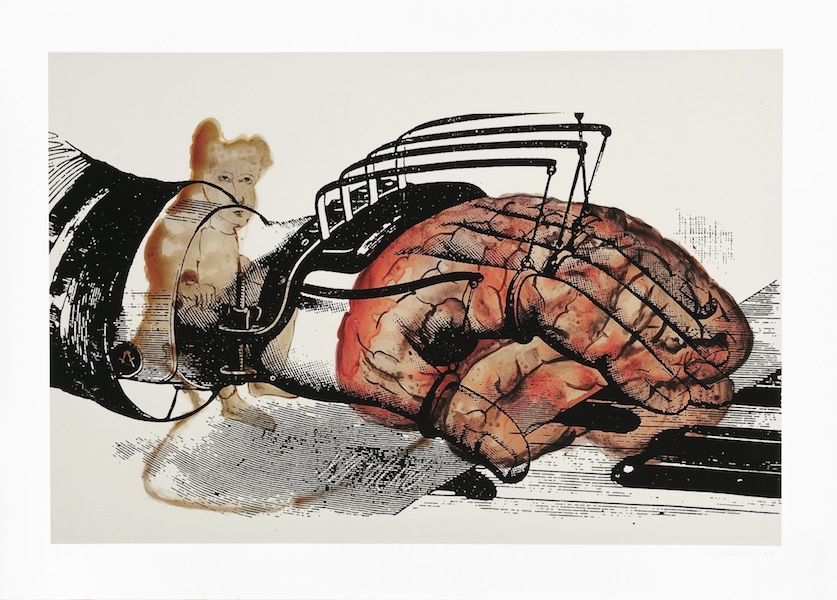
© » KADIST
Nalini Malani
Memory: Record/Erase is a stop-motion animation by Nalini Malani based on ‘The Job,’ a short story by celebrated German poet and playwright Bertolt Brecht. Brecht’s story follows a poverty-stricken family during the German depression, as the central character, Frau Hausmann, is forced to impersonate her late husband to procure his job as a nightwatchman to support her two children. Despite her exceptional performance during the job, and even after receiving public commendation for catching a thief, when eventually her identity is discovered during a factory accident she is forced into a precarious existence where she resorts to selling herself to get by.

© » KADIST
Julio Cesar Morales
Contrabando is a work that references the larger sociological phenomenon in which immigrant economic strategies come to infiltrate urban landscapes. It is a study of the realities and consequences of exploited labor that simultaneously aims to record the living history of labor.

© » KADIST
Gimhongsok
To explore the boundaries between artwork and audience, Gimhongsok created a series of sculptural performances in which a person wearing an animal costume poses in the gallery. Bunny’s Sofa is a continuation of this series, but with a different twist. Instead of hiring a real person to dress as the animal, Gimhongsok placed a mannequin inside the rabbit costume.

© » KADIST
Yoshua Okón
Canned Laughter was Okón’s response to an invitation from Ciudad Juárez , Mexico, where artists were asked to create works based on their experience of the city. Okón focuse d on Ciudad Juárez as a site for many ‘ maquiladoras ’ ( factories) and on its role within the global context. A mixed media and video installation , the work takes the form of a fictitious factory that produces canned laughter for sitcoms.
Arseny Zhilyaev
Arseny Zhilyaev is arguably one of the most influential contemporary Russian artists of his generation...
Julio Cesar Morales
- location: San Francisco, California
- year born: 1966
- gender: male
- nationality: Mexican
- home town: Tijuana, Mexico
Jared Owens
During more than 18 years of collective incarceration, Jared Owens became a self-taught artist, working in painting, sculpture, and installation, using materials and references culled from penal matter...
Liu Chuang
Known for engaging socio-economic matters as they relate to urban realities, Liu Chuang proposes different understandings of social systems underlying the everyday...
Nagendra Gurung
Since the mid-2000s, Nagendra Gurung has practiced photography in parallel to his life as a migrant worker in Dubai and Saudi Arabia...
Zhou Tao
Artist Zhou Tao has a diverse and varied practice, and notably, he denies the existence of any singular or real narrative or space...
Adrian Melis Sosa
Adrian Melis’s work is committed to presenting the range of intensity and nuance of human energy embodied through acts of resistance, resilience, and productivity...
Moe Satt
Moe Satt is a Burmese visual and performance artist who uses his own body as a symbolic field for exploring self, identity, embodiment, and political resistance...
Adelita Husni-Bey
Born in Milan, Italian-Libyan Adelita Husni-Bey is an artist and researcher...
Lam Tung Pang
Lam Tung Pang uses both traditional and non-traditional Chinese ink techniques and materials for his landscapes, referencing notions of collective memory that relate to specific sites...
Xiaoyun Chen
- location: Hangzhou, China
- year born: 1971
- gender: male
- nationality: Chinese
- home town: Hubei Province, China
Mimian Hsu Chen
Costa Rica-based artist Mimian Hsu works with photography, documents, typography, and objects to construct site-specific installations, performances, and projects that explore intersecting cultural identities...
Tun Win Aung and Wah Nu
Wah Nu and Tun Win Aung, respectively born in 1977 and 1975, Yangon, Myanmar...
Hit Man Gurung
Hit Man Gurung was born in Lamjung, Nepal and is currently based in Kathmandu...
Li Shuang
Raised in rural south-eastern China in the 1990s, Li Shuang grew up consuming popular media such as YouTube, MySpace, knock off Nintendo consoles, pirated video games, and dakou CDs...
Hong-Kai Wang
Wang is an artist working primarily with sound...
Prabhakar Pachpute
Prabhakar Pachpute calls attention to issues concerning land politics, industry, and labor through a multimedia practice that includes drawing, painting, sculpture, animation, and murals...
Antonio Vega Macotela
Antonio Vega Macotela’s multidisciplinary practice is centered around site-specificity, and often engages marginalized communities such as prison inmates, miners, Indigenous communities, and hackers...
Nalini Malani
- year born: 1946
- gender: female
- nationality: Indian
- home town: Karachi, Pakistan
Hana Miletic
Hana Miletic is a Croatian artist living in Brussels with a background in documentary and street photography...
-
1990-1999
Nalini Malani
1996Memory: Record/Erase is a stop-motion animation by Nalini Malani based on ‘The Job,’ a short story by celebrated German poet and playwright Bertolt Brecht...
-
2000-2009
Nagendra Gurung
2005Chalis Katesi Ramaula is a series of 240 prints capturing Nagendra Gurung’s life, work, and colleagues from the construction sites where he has worked in Dubai and Saudi Arabia...
Xiaoyun Chen
2006State Terrorism in the ultimate form of Pre-Raphaelite Brotherhood features a portrait of the artist wearing a zipped utilitarian jacket reminiscent of a worker’s uniform, with one arm behind his back as if forced to ingest a bundle of stick—a literal portrayal to the definition of fascism...
Gimhongsok
2007To explore the boundaries between artwork and audience, Gimhongsok created a series of sculptural performances in which a person wearing an animal costume poses in the gallery...
Adrian Melis Sosa
2008In Cuba, due to the lack of materials, workers of state-owned construction companies must remain at work without doing anything, waiting for the end of the working day...
Yoshua Okón
2009Canned Laughter was Okón’s response to an invitation from Ciudad Juárez , Mexico, where artists were asked to create works based on their experience of the city...
-
2010-2019
Tamar Guimarães
2010Canoas by Tamar Guimarães is a film made for the 2010 São Paulo biennial as an exercise in the projection of national identity...
Tun Win Aung and Wah Nu
2011Tun Win Aung and Wah Nu initiated the series 1000 Pieces (of White) in 2009, as a way to produce objects and images as a portrait of their shared life as partners and collaborators...
Hong-Kai Wang
2011The video Music While We Work (2011) is the first part/work of a long-term research project started in 2010...
Julio Cesar Morales
2011Contrabando is a work that references the larger sociological phenomenon in which immigrant economic strategies come to infiltrate urban landscapes...
Lam Tung Pang
Drawing & Print
2013(Drawing & Print) Lam Tung Pang created Sketches from train ride Chicago to San Francisco during his travels through the United States researching American curatorial strategies for representing traditional Chinese painting in museums and cultural institutions...
Phan Thao Nguyên
2013On September 22, 1940 the French signed an accord, which granted Japanese troops the right to occupy Indochina...
Mimian Hsu Chen
2014In Hsu’s work, Colonia China (2014), the artist documents a Chinese cemetery of Costa Rica’s Limón Province, along the country’s Caribbean coast...
Liu Chuang
2014Categorized as low-level literature, a “Love Stories” book is a romantic popular fiction of proletariat China, read mainly by teenagers, students, and young workers...
Adelita Husni-Bey
2015After the Finish Line is a recent film by Adelita Husni-Bey produced for the exhibition Movement Break at Kadist-SF in 2015...
Prabhakar Pachpute
2017Prabhakar Pachpute was born in 1986 and raised in Chandrapur (Maharashtra), India, a place known as ‘The City of Black Gold’, where his family has worked for three generations in one of the oldest mines in the country...
Hana Miletic
2019Incompatibles (Unitas) is made from discarded samples of the yarns that are exported from Croatia and not actually available in the local market...
-
2020-2029
Asli Çavusoglu
2020In the exhibition Pink as a Cabbage / Green as an Onion / Blue as an Orange , Asli Çavusoglu pursues her work on color to delve into an investigation into alternative agricultural systems and natural dyes made with fruits, vegetables, and plants cultivated by the farming initiatives she has been in touch with...
Asli Çavusoglu
2020In the exhibition Pink as a Cabbage / Green as an Onion / Blue as an Orange , Asli Çavusoglu pursues her work on color to delve into an investigation into alternative agricultural systems and natural dyes made with fruits, vegetables, and plants cultivated by the farming initiatives she has been in touch with...
Asli Çavusoglu
2020In the exhibition Pink as a Cabbage / Green as an Onion / Blue as an Orange , Asli Çavusoglu pursues her work on color to delve into an investigation into alternative agricultural systems and natural dyes made with fruits, vegetables, and plants cultivated by the farming initiatives she has been in touch with...
Yétúndé Olagbaju
2021Yétúndé Olagbaju’s On becoming a star series recuperates the figure of ‘Mammy’, a stereotype rooted in American slavery that typically depicts a larger, dark skinned woman as a maternal presence, often within a domestic setting, and typically taking care of white children...
Antonio Vega Macotela
2022The mines at Potosí are both the site and subject of this work, also titled Potosí, by Antonio Vega Macotela...
Jared Owens
2022Hog feed 102 is an exemplary work by Jared Owens that combines two of the artist’s primary signatures: the use of soil smuggled out of the grounds at F...

